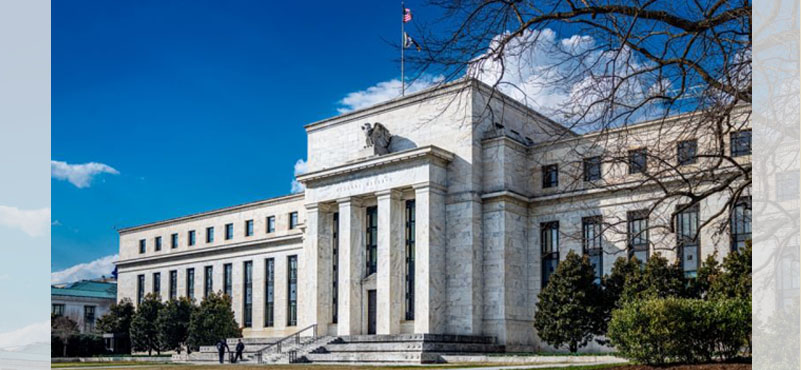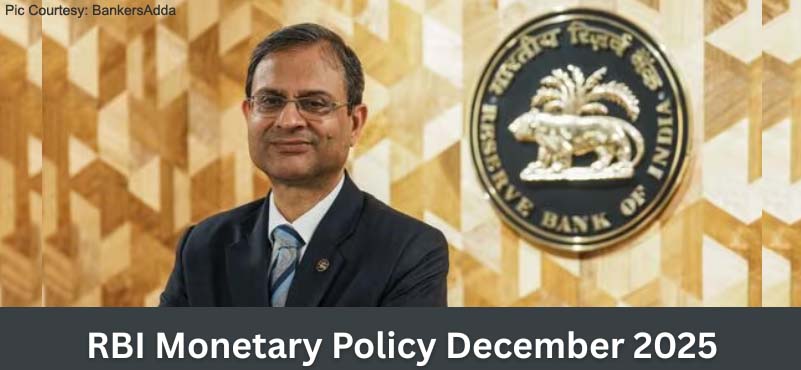Analytics of the Federal Reserve’s September 2025 Policy
In line with market expectations, the Federal Reserve shifted toward monetary easing in September 2025 by cutting its benchmark federal funds rate by 25 basis points to a target range of 4.00%–4.25%. This marked the Fed’s first rate reduction since December 2024, ending a nine-month period of steady policy restraint. The decision represents a pivotal moment in the Fed’s ongoing balancing act between its dual mandate—fostering maximum employment and ensuring price stability—against a backdrop of slowing economic momentum, sticky inflation, and heightened political scrutiny.
President Donald Trump, returning for a second administration, has been vocal in pressing the Fed for lower rates, arguing that easing was necessary both to revive a fragile housing market and to reduce the government’s debt servicing costs. While political pressure alone does not dictate Fed policy, the timing and framing of this decision highlight the difficult intersection of economics and politics that the central bank must navigate.

The Rationale for the September Cut
The September decision stemmed from several interrelated developments:
- Labor Market Softening
After years of robust job creation, recent months have revealed signs of labor market cooling. Payroll growth has slowed from its earlier pace of over 250,000 jobs per month to an average closer to 120,000. Unemployment, though still historically low at 4.1%, has inched up from its trough. Job openings have declined, wage growth has moderated, and initial claims for unemployment insurance have trended higher. For a Fed whose mandate includes maximum employment, these developments warranted attention. - Slowing Economic Growth
Real GDP growth has decelerated from the 3% annualized pace seen in early 2024 to closer to 1.5–2% in mid-2025. Manufacturing activity has contracted in several regional Federal Reserve Bank surveys, while consumer spending—long the bedrock of U.S. growth—has shown signs of fatigue. High borrowing costs have dampened credit growth, particularly in housing, autos, and small-business lending. - Sticky Inflation
Inflation remains the most vexing part of the Fed’s puzzle. Headline inflation has receded from its 2022 peak above 9% to around 3.3%, yet it has proven stubbornly resistant to further decline. Core inflation, which strips out volatile food and energy components, remains elevated at 3.1%—well above the Fed’s long-run target of 2%. Services inflation, driven by shelter and healthcare costs, has been particularly persistent. Chair Powell acknowledged this tension, emphasizing that inflation progress has slowed even as economic activity has moderated.

A Dovish Tilt with Caveats
The Fed’s post-meeting statement and Powell’s subsequent press conference both carried a cautiously dovish tone. Policymakers projected two additional quarter-point cuts in the remaining months of 2025, conditional on incoming economic data. This forward guidance suggests a recognition that financial conditions need to ease further to prevent a sharper slowdown, but also reflects an unwillingness to abandon inflation vigilance.
Chair Powell described the September move as a “risk management” cut, reflecting a judgment that leaving rates too high for too long could exacerbate labor market weakness and tip the economy toward recession. He underscored, however, that policy remains “moderately restrictive,” signaling that the Fed is not embarking on an aggressive easing cycle akin to those during previous recessions. Instead, officials emphasized a meeting-by-meeting approach, keeping flexibility to respond to evolving risks.
The central bank also released updated economic projections. Officials modestly revised up their expectations for GDP growth in 2025, reflecting resilience in household spending and government outlays. Inflation and unemployment forecasts were largely unchanged, underscoring the Fed’s belief that inflationary pressures will continue to decline gradually.
Internal Divisions: A Narrow but Telling Dissent
The September decision was supported by an 11-to-1 vote on the Federal Open Market Committee (FOMC). The lone dissenter, Governor Stephen Miran, favored a larger 50-basis-point cut. His dissent underscores the growing debate within the Fed: whether small, incremental adjustments will suffice or whether bolder moves are needed to safeguard growth.
The divergence in policymakers’ end-of-year projections now spans 150 basis points between the most hawkish and dovish participants. Such dispersion reflects the unusual crosscurrents facing the U.S. economy: weakening growth, resilient consumption, sticky inflation, and ongoing global uncertainties. While consensus still prevails, the dissent highlights the possibility of sharper moves ahead if conditions deteriorate.
Political Backdrop: A Complicated Interplay
The Fed’s independence is a cornerstone of U.S. economic governance. Yet, political dynamics inevitably shape perceptions of its actions. President Trump has repeatedly called for lower interest rates, criticizing the Fed for keeping policy “too tight” and arguing that elevated rates were suppressing housing activity and unnecessarily raising Treasury financing costs.
While Powell has carefully reiterated the Fed’s independence, markets cannot ignore the political backdrop. With fiscal deficits widening and government debt surpassing $36 trillion, debt servicing costs have surged. Each percentage point of interest rates translates into hundreds of billions of additional debt payments. Thus, lower rates align with fiscal imperatives as well as macroeconomic ones.
Still, the Fed must guard against the perception that it is yielding to political pressure. Powell’s framing of the cut as a “risk management” tool was likely designed to reinforce the Fed’s data-dependence and to avoid the impression of capitulating to external demands.
The Broader Global Context
The Fed’s decision also must be understood against a global backdrop:
- Global Growth Weakness: Europe remains mired in sluggish growth, with Germany narrowly avoiding recession. China continues to grapple with property market strains and structural slowdown, dampening global demand.
- Diverging Central Banks: The European Central Bank (ECB) and Bank of England have already initiated easing cycles, while the Bank of Japan remains highly accommodative. The Fed’s cut thus brings U.S. policy more in line with global peers.
- Financial Market Implications: The dollar weakened modestly following the announcement, while Treasury yields declined. Equities rallied, reflecting optimism that lower borrowing costs will cushion growth. Emerging markets welcomed the move, as a softer dollar reduces capital outflow pressures.
Historical Perspective
The September 2025 cut echoes previous episodes where the Fed shifted from tightening to easing amid mixed signals:
- 1995 Soft Landing: The Fed cut rates pre-emptively after a modest slowdown, achieving a soft landing without recession.
- 1998 Financial Turmoil: Facing global financial instability, the Fed made “insurance” cuts to sustain domestic growth.
- 2019 Mid-Cycle Adjustment: The Fed reduced rates three times, characterizing them as a “mid-cycle adjustment” rather than the start of a full easing cycle.
Powell’s reference to “risk management” evokes these precedents, suggesting the Fed aims to engineer a slowdown without triggering a hard landing. Yet, history also warns that inflationary persistence can constrain easing, as in the 1970s. The challenge lies in striking the right balance.
Risks and Uncertainties Ahead
Looking forward, several uncertainties will shape the Fed’s policy path:
- Inflation Trajectory: If inflation remains stubborn above 3%, the Fed may need to pause further cuts, risking recession but preserving credibility. Conversely, if inflation declines more quickly, space for deeper easing will emerge.
- Labor Market Deterioration: A sharper rise in unemployment could compel the Fed to accelerate cuts, even at the risk of inflation stalling.
- Housing and Credit Conditions: With mortgage rates still elevated near 6.5%, housing activity remains suppressed. The Fed will watch closely for signs of credit strain or financial instability.
- Global Geopolitical Risks: Trade tensions, conflicts, and commodity shocks could complicate the inflation-growth trade-off.
- Fiscal Policy Interaction: With large deficits and potential tax changes on the horizon, fiscal-monetary interplay will remain a key variable.
Implications for Markets and the Economy
- Equities: Lower rates generally support equity valuations, though earnings growth remains vulnerable to slowing demand.
- Bonds: Treasury yields have already declined, improving refinancing conditions for corporates and households.
- Housing: Rate cuts could provide some relief, though affordability remains constrained by high home prices.
- Dollar: A softer dollar eases pressures on exporters and emerging markets, but may modestly elevate import prices.
For households and businesses, the Fed’s pivot signals some relief on borrowing costs. Yet, for savers and fixed-income investors, returns will diminish. For the broader economy, the impact will depend on whether easing proves sufficient to sustain momentum without reigniting inflationary pressures.
Conclusion: A Delicate Balancing Act
The Federal Reserve’s September 2025 decision marks a clear pivot from tightening to cautious easing. While the 25-basis-point reduction appears modest, its symbolic significance is considerable: the Fed has acknowledged both the limits of restrictive policy and the risks of an economic slowdown.
Yet, the Fed remains constrained by inflation that is still above target, a political environment pressing for faster cuts, and a global economy fraught with uncertainty. The next few months will be critical in determining whether September’s move was the first step in a gradual but sustainable easing cycle—or merely a temporary adjustment amid continued turbulence.
Chair Powell and his colleagues must therefore navigate an “unusual situation,” balancing the risks of cutting too slowly against those of cutting too aggressively. Their challenge is to sustain growth and employment without undermining inflation-fighting credibility. The ultimate outcome will hinge on the interplay of data, markets, and political realities—a reminder that monetary policy is as much art as science.
In the words of one analyst, the Fed is “walking a tightrope in the wind.” September’s cut is just the first step along a precarious path that will define not only the trajectory of the U.S. economy but also global financial stability in the months and years to come.
ABOUT THE AUTHOR
 Dr. Manoranjan Sharma is Chief Economist, Infomerics, India. With a brilliant academic record, he has over 250 publications and six books. His views have been cited in the Associated Press, New York; Dow Jones, New York; International Herald Tribune, New York; Wall Street Journal, New York.
Dr. Manoranjan Sharma is Chief Economist, Infomerics, India. With a brilliant academic record, he has over 250 publications and six books. His views have been cited in the Associated Press, New York; Dow Jones, New York; International Herald Tribune, New York; Wall Street Journal, New York.








